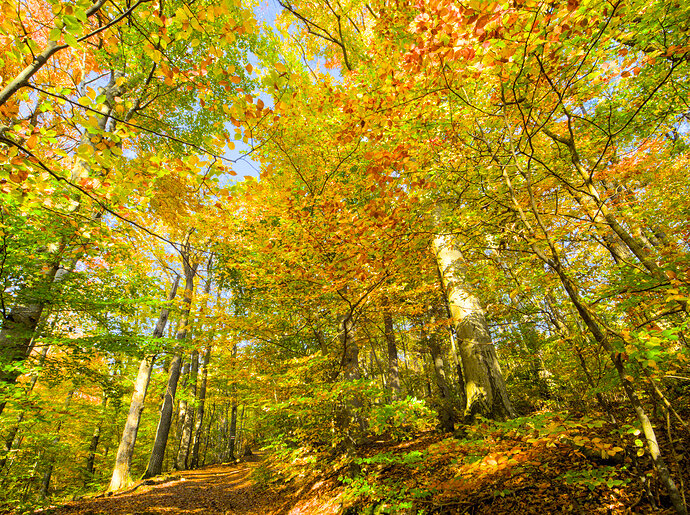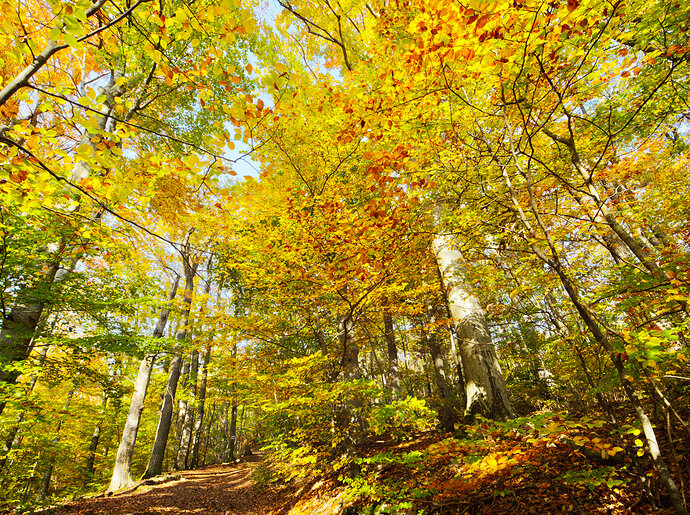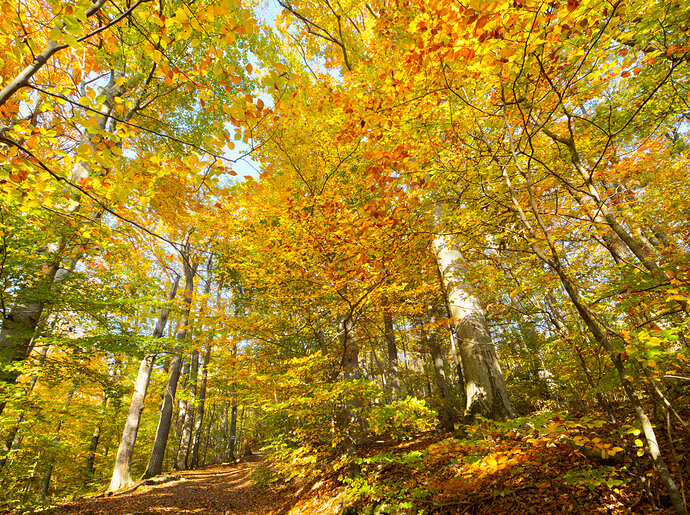guess which photo was processed with which tonemapper
This is fun! Unfortunately I’m not experienced enough to judge. Hardly ever used sigmoid and have no pretense I really use all possibilities of the tonemappers to the bottom… Others surely are better at this.
Beautiful picture by the way! Regards Jetze
Thanks
There are distinct differences in the sky’s blue’s and on the stem of the thickest tree a bit right of the middle.
As well in the foliage…
A wild guess…
File _01 is AGX
File _02 is Filmic
File _03 is Sigmoid
What are the reasons for your opinion? Can you describe the differences and how you interpret them?
I tried to make the edits as similar as possible whout editing too heavily or differently. I also tried to stick to the recommended workflows as much as possible.
I have no idea which one uses which tone mapper, but my preference is for the middle one.
If agx lessens the saturation in the highlights then I would think the second picture to be agx. Then I would guess 1 is done in Sigmoid and 3 to be Filmic. But please take this with a kilo of salt at least.
These three images show that all tone mappers are good but different. If I was to guess I am picking agx for the first image as this image has more color in the blue sky. But I don’t know which tone mapper is capable of giving the bluest sky.
But if I did a second guess I would pick the second image as agx because the shadows are dark and highlights bright. But this is something I would also expect of filmic.
So I haven’t got a stuffing clue. ![]()
hmmm, My guess is:
1.filimc , Darkest
2.Sigmoid
3.Agx, vivid colors, IMHO, default Agx tends to do a bit oversaturation. It requires a bit more work but results are excellent.
I am guessing that no other module was used in all the three cases. In that case my pick will be #2-Agx, #1-Sigmoid and #3-Filmic, looking at the range of colors - from the surface to the sky
I am not familiar enough with the tone mappers to guess. It is a bit of a trick question because the image is so busy, each tool is so complex, we do not know the version of each you are using and the post’s layout order is different from the filename order.
As for
Sameness only exposes the tool that you are least capable/comfortable using or least like; you may be subconsciously trying to use it to look like the result of preferred one. That is, likely, not all results are optimal. I do not know your decision and editing process, but if it were up to me, I would include the SOOC JPG in the post for comparison and use the three tools to try to get to that JPG as the objective key.
Subjectively, I do enjoy the middle photo (03), as it has more contrast and less colour cast, though it is slightly blown (for contrast).
I’m guessing Sigmoid/Filmic/AGX
Basing it on nothing more than a hunch as I’ve only used filmic since I’ve started learning darktable.
We have a winner.
- sigmoid, high contrast, high overall saturation
- filmic, lowest saturation
- agx, highlight with lower saturation, otherwise very balanced
The winner is @siamak !!!
It would be great if you could describe more how you came to the right conclusion.
Imo it is not oversaturation with agx, it is the fact that it makes more orange, brown and red leaves, and that is because of the default rgb primaries settings.
The most green leaves are in the filmic version. I used very little local contrast here because without local contrast the photo looked too flat.
As far as the second sigmoid version is concerned: I chose the smooth preset, and a rather high value for the contrast.
I only shoot raw. Maybe I can extract the jpeg from it, but trust me, it is nothing really usable.
wow hoo,
I agree with your analysis of the Agx.
As I said in my other posts elsewhere, I am In the process of creating a workflow for 3000-4000 negative films. During the test, I notice as you explained it more clearly Agx makes images more orangey-red. I did not fully understand the Agx to identify the origin of this effect. I personlly think Agx gives better result. However, it takes more effort and tweaking, or maybe I did not discovered yet the shortcuts. In your samples I liked Filmic. It could be because I tend to like images that shows structure without too much color drama. More realistic the better.
In general, post tone mapping colour would be finalised with the primaries / after tone mapping controls (per-colour purity boost (~ saturation) and rotation reversal (~ hue controls). It is important to know that the look → preserve hue setting comes before the final primaries / after tone mapping step, it only applies to the direct output of the curve, still in the processing (rendering) space.


